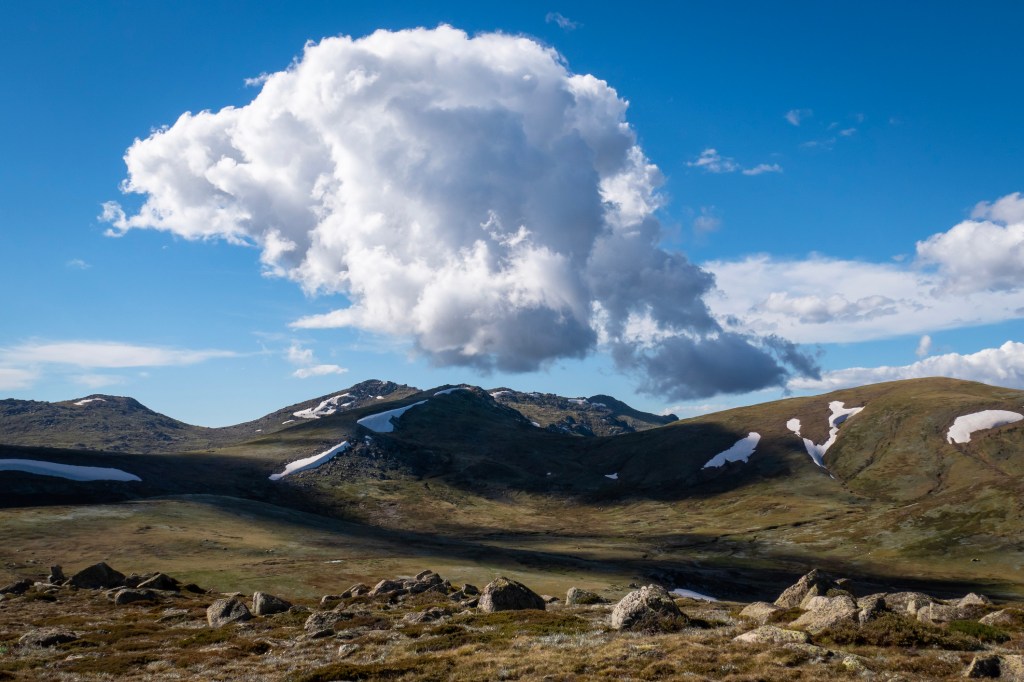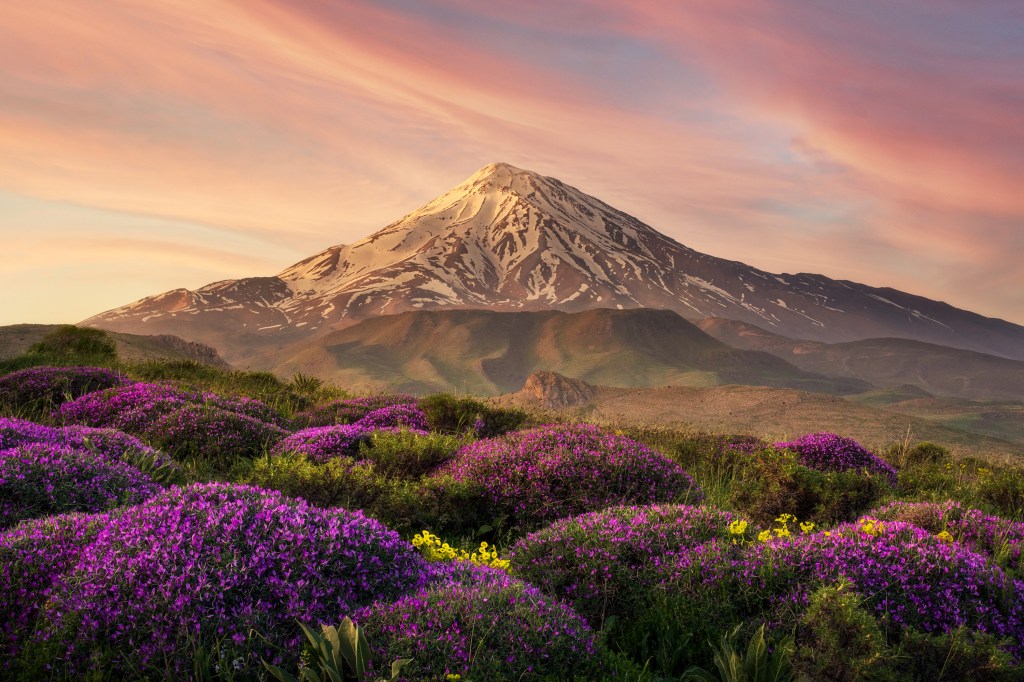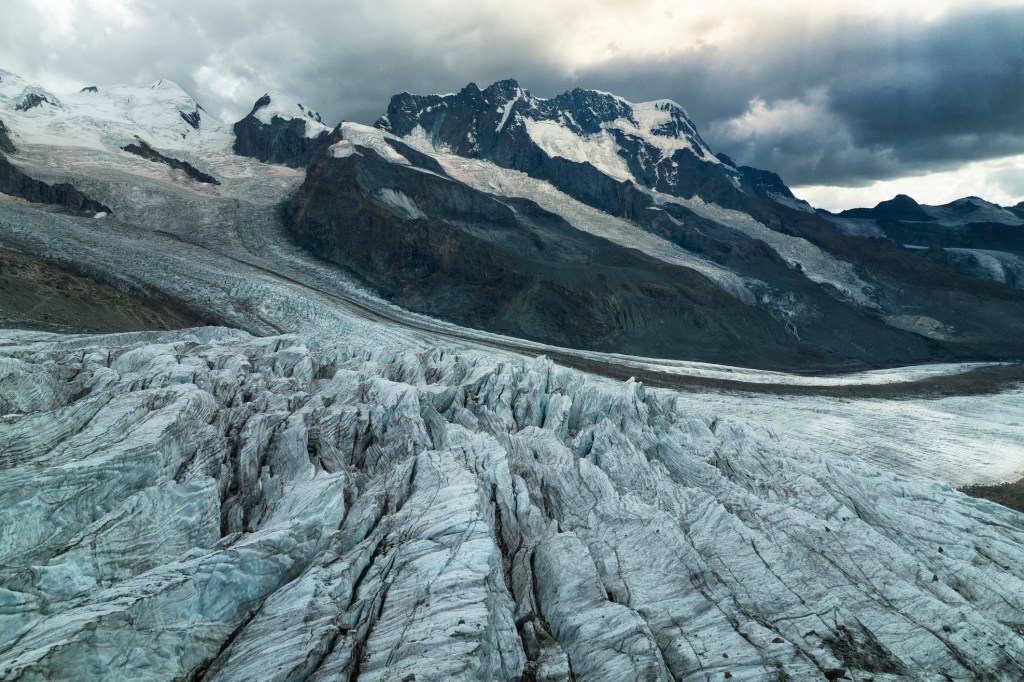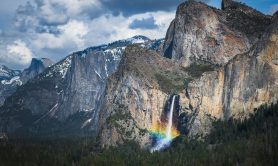

Mountaineering is a sport that has been around for centuries, but not everyone is cut out for scaling steep peaks with ropes and technical equipment. For those keen to experience the thrill of hiking up to the highest points on earth, some mountains can be climbed with no technical skills needed. These nine stunning peaks around the world are worthy of the bucket list for ambitious, fit hikers to tackle—with a little smart preparation.
Videos by Outdoors
1. Mount Kilimanjaro, Tanzania

Clocking in at 19,341 feet, Tanzania’s Mount Kilimanjaro is the tallest mountain on the African continent, making it a popular destination for hikers and adventurers worldwide. But its status as a non-technical climb means it’s challenging but not impossible, making it an excellent adventure for those looking to push themselves without putting themselves in danger.
Depending on the route, a typical climb takes between 5 and 9 days to complete. Kilimanjaro’s location, near the Kenyan border, makes it a great jumping off point for further African adventures, whether exploring the sparkling beaches of Zanzibar or magnificent game drives in Tsavo West National Park.
When to go: The best time to climb Mount Kilimanjaro is during the dry season, which runs from late June to October and from December to February. Mount Kilimanjaro can be climbed year-round, but the rainy season from March to May and November can be challenging due to the wet conditions and slippery trails.
Where to stay: There are several camps along the mountain, but most hikers stay at one of the huts on the Marangu Route.
How to get there: Kilimanjaro International Airport is 30 miles from the mountain and is served by several international airlines, including Turkish Airlines, Ethiopian Airlines, KLM and Qatar Airways. Most hikers start their climbs from the Marangu, Machame or Lemosho gates, which can be reached by road from the airport.
2. Mount Aconcagua, Argentina

Mount Aconcagua, the highest peak in both the Western and Southern Hemispheres, is a highly desirable destination for experienced hikers and mountaineers. Clocking in at 22,841 feet, the mountain has two main routes to the summit: the Normal Route and the Polish Glacier Traverse, both of which require basic mountaineering skills—such as using crampons and ice axes—but do not require any technical climbing skills.
While the climb to the summit is a physically demanding endeavor, those who make the trek will encounter views of the surrounding Andes Mountains, including glaciers, lakes and valleys. Hikers typically spend between 12 and 18 days on the mountain.
When to go: The best time to climb Mount Aconcagua is during the summer months, which run from December to March.
Where to stay: Most hikers stay in the base camps of Confluencia, Plaza de Mulas and Plaza Argentina, but for a pre- or post-summit retreat, the Entre Cielos Luxury Wine Hotel & Spa shouldn’t be missed.
How to get there: Hikers can fly into Mendoza from Buenos Aires or other major cities in Argentina and Santiago, Chile. From there, hikers can arrange transportation to the nearby town of Penitentes, where they can start their climb.
3. Mount Vinson, Antarctica

Antarctica’s highest peak, Mount Vinson, is one of the world’s most remote and challenging mountains—mainly because it requires significant cold weather endurance, as temperatures can dip as low as -40°F near the summit of 16,050 feet. It also may take between 5 and 9 days to reach it.
Despite the challenges, climbing Mount Vinson is a once-in-a-lifetime experience with a surprisingly high success rate. It’s a climb that also requires significant logistics and support, making it a team effort that fosters camaraderie and a sense of achievement among climbers.
When to go: The only time when weather conditions are generally stable enough to attempt a climb on Mount Vinson is during the austral summer months of November through January. During this season, the sun is out 24 hours a day, providing continuous daylight and making it easier to navigate and climb in the daylight hours. The temperatures are still frigid, however, with average temperatures ranging from 14°F to -22°F.
Where to stay: When climbing Mount Vinson, climbers typically stay in expedition tents at base camp and higher camps. There are no permanent structures on the mountain, and climbers must bring all their gear and supplies. The base camp is located at around 7,200 feet and is typically set up on the Branscomb Glacier. From there, climbers move up to higher camps as they acclimatize and prepare for the summit push.
How to get there: The most common way to reach Mount Vinson is to fly from Punta Arenas, Chile, to Union Glacier Camp. From there, climbers typically take a Twin Otter ski plane to base camp. The flight from Punta Arenas takes around 4 hours, and the flight from Union Glacier to Vinson Base Camp takes approximately 90 minutes. The flights are typically operated by private tour companies specializing in Antarctic expeditions.
4. Mount Kosciuszko, Australia

Mount Kosciuszko, located in the Australian Alps, is a popular destination for hikers and outdoor enthusiasts of all skill levels. At 7,310 feet in height, Australia’s highest peak can be climbed without requiring technical mountaineering skills or equipment. The climb to the summit is a rewarding and scenic experience, with views of the surrounding mountain ranges, valleys and rivers. The ascent typically takes around four to six hours, and the trail is well-maintained and easy to follow.
In addition to the scenic beauty, Mount Kosciuszko also holds cultural and historical significance: It is considered a sacred site by the indigenous Wiradjuri people and was named after a Polish patriot who fought for the freedom of his country.
When to go: Australia’s summer months from December to February are the best time to tackle Mount Kosciuszko. The weather is generally milder and more stable, with less chance of snow and ice on the trail.
Where to stay: Thredbo Village is a ski resort town located at the base of Mount Kosciuszko, offering a range of accommodation options, including hotels, lodges, apartments and chalets.
How to get there: The nearest major airports to Mount Kosciuszko are in Sydney and Melbourne. From either, you can rent a car or take a bus to the Snowy Mountains region. The drive from Sydney takes about 5 hours, while the drive from Melbourne is about 6 hours. There is also a small airport in Cooma, about an hour’s drive from Mount Kosciuszko.
5. Mount Damavand, Iran

Mount Damavand, located in northern Iran, is the highest peak in the Middle East, standing at an impressive 18,406 feet tall. Considered one of the Seven Summits—the highest mountains on each of the seven continents—it’s also steeped in history and culture. It has been mentioned in Persian mythology and literature for centuries and is believed to be the home of a legendary Persian hero named Zahhak. Climbing Mount Damavand also provides an opportunity to experience the stunning natural beauty of the Alborz mountain range.
When to go: The best time to climb Mount Damavand is during the summer months, from late June to early September. The weather is generally dry and warm, with temperatures averaging around 50°F to 59°F at lower elevations and dropping to around freezing at higher elevations. The snow cover on the mountain has usually melted by July, making the ascent more accessible and safer.
Where to stay: The base town for Damavand is Polour, where there are several hotels and guesthouses, including the Polour Mountain Complex, a no-frills hostel-style camp run by the Iran Mountaineering Association.
How to get there: The most common way to get to Mount Damavand is to fly to Tehran, the capital of Iran, and then travel to the mountain from there. You can take a taxi or shuttle from Tehran to Polour, about 44 miles northeast.
6. Mount Toubkal, Morocco

Climbing Morocco’s Mount Toubkal offers hikers a unique opportunity to experience the vibrant Berber culture of the region, as well as to explore the natural beauty of the High Atlas Mountains. The 13,671-foot ascent is challenging but not technical, making it accessible to most fit and experienced hikers.
The trek to the summit takes you through scenic valleys, past rushing streams and quaint Berber villages, offering a glimpse into the daily lives of the local population. The summit itself offers a panoramic view of the entire region.
When to go: Mount Toubkal can be climbed year-round, but the best time to attempt the summit is during the summer months, from May to September, when the weather is generally mild and dry.
Where to stay: The base town for Toubkal is Imlil, where there are several guesthouses and hotels, but the 14-room Kasbah du Toubkal has incredible views of the mountains from its pristine terraces and gardens.
How to get there: Marrakech is the most common starting point for a climb of Mount Toubkal. You can take a shared taxi from Marrakech or hire a private car to Imlil, the gateway to the High Atlas Mountains. Imlil is located about 43 miles south of Marrakech. Once you reach Imlil, you can hire a local guide and muleteer to take you on the trek to the summit of Mount Toubkal, which takes around two or three days.
7. Pico de Orizaba, Mexico

Pico de Orizaba, located in central Mexico, is the highest peak in Mexico, standing at an impressive 18,491 feet tall. Climbing Pico de Orizaba offers hikers a unique opportunity to experience the Mexican highlands, including views of the nearby Popocatepetl and Iztaccihuatl volcanoes.
The mountain also holds cultural and historical significance, as it is considered a sacred site by the indigenous Nahua people, who believe it is the dwelling place of their gods. Pico de Orizaba is also a reasonable day trip to the nearby city of Puebla, which is famous for its colonial architecture, local cuisine and vibrant arts scene.
When to go: The best time to climb Pico de Orizaba is from November to March, when the weather is generally dry and cool.
Where to stay: The small town of Tlachichuca is located at the base of Pico de Orizaba and is a popular base for climbers. Tlachichuca offers a range of accommodation options, including hotels, hostels, and guesthouses. Many climbers stay with a local guide service or mountain outfitter, like Servimont, who can provide accommodation, transportation and assistance with permits and logistics.
How to get there: The best way to get to Pico de Orizaba is to fly into Mexico City and then hire a car or take a bus to Tlachichuca. The journey takes between 3 and 4 hours by car or bus.
8. Mount Temple, Canada

Mount Temple, located in Banff National Park in Alberta, Canada, is one of the tallest peaks in the Canadian Rockies, standing at 11,625 feet tall. The standard route is about 10 miles round-trip and takes between 8 to 10 hours to complete, depending on your pace and level of experience. The hike starts at Moraine Lake, which is accessible by car or shuttle bus from the town of Banff and follows a well-marked trail up the mountain, but the trail is steep and rocky, with several sections of scree and loose rock.
The mountain also holds historical significance, as it was named in 1894 by James Hector, a member of the Palliser Expedition, in honor of Sir Richard Temple, who was then the Governor General of Canada.
When to go: The best time to climb Mount Temple is during the summer, from late June to early September, when the weather is generally mild and dry.
Where to stay: Banff is located just a short drive from Mount Temple and offers a range of accommodation options, including hotels, motels, hostels and guesthouses, including the stunning Fairmont Banff Springs and Fairmont Château Lake Louise—both of which you’ve undoubtedly seen on your Instagram feed.
How to get there: Calgary is the nearest major city to Mount Temple, located about 93 miles to the east. From Calgary, you can rent a car and drive to Banff National Park, which takes about 2 hours. Several shuttle services operate between Calgary and Banff.
9. Breithorn, Switzerland

Breithorn, located in the Pennine Alps of Switzerland and Italy, offers hikers panoramic views of the surrounding valleys, peaks, and glaciers, including the famous Matterhorn and Monte Rosa.
The 13,661-foot peak is also easily accessible, with a cable car and a chair lift taking climbers from the town of Zermatt to the Klein Matterhorn, the starting point for the relatively short 3- to 4-hour ascent.
Climbing Breithorn also provides an opportunity to explore the rich history and culture of the surrounding region, including the nearby town of Zermatt, which is famous for its alpine scenery, outdoor recreation, and gourmet cuisine.
When to go: The best time to climb Breithorn is during the summer, from late June to early September, when the weather is generally mild and dry.
Where to stay: Nearby Zermatt has plenty of luxury accommodations, but the chalet-style Matthiol is freshly renovated, offering 31 rooms and a spa.
How to get there: Zermatt, which offers easy access to Breithorn, can be reached by train from major cities in Switzerland and neighboring countries. There are direct trains to Zermatt from Geneva, Zurich, Bern and other Swiss cities. You can also take the train from Milan, Italy, to Brig and then transfer to a regional train to Zermatt.










Pingback: WATCH: Actor Michael Sheen Helps Wales Rebrand One of the UK’s Most Rugged National Parks – Outdoors.com